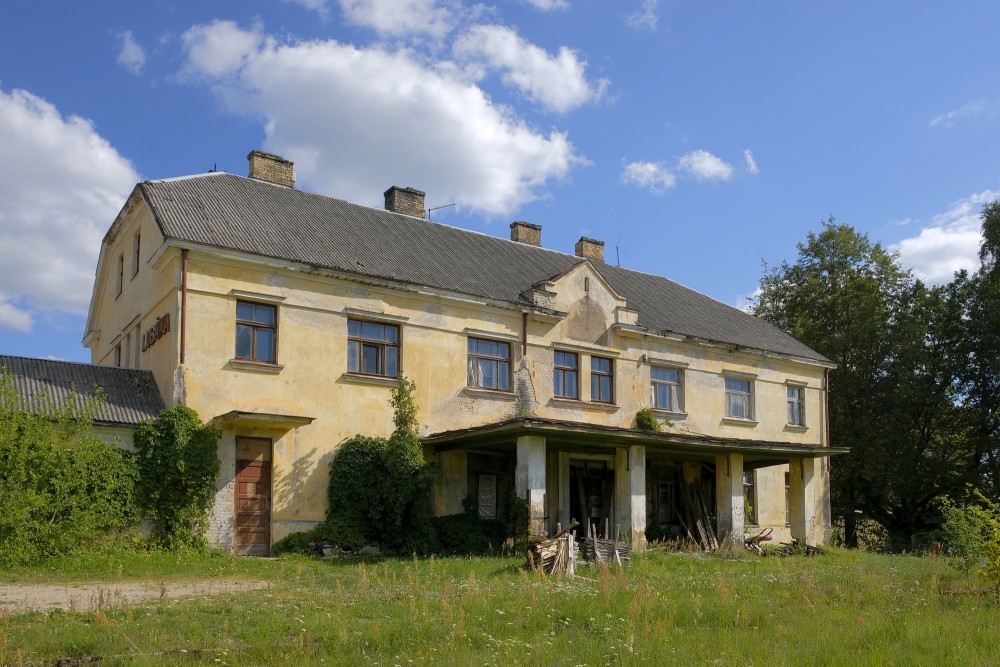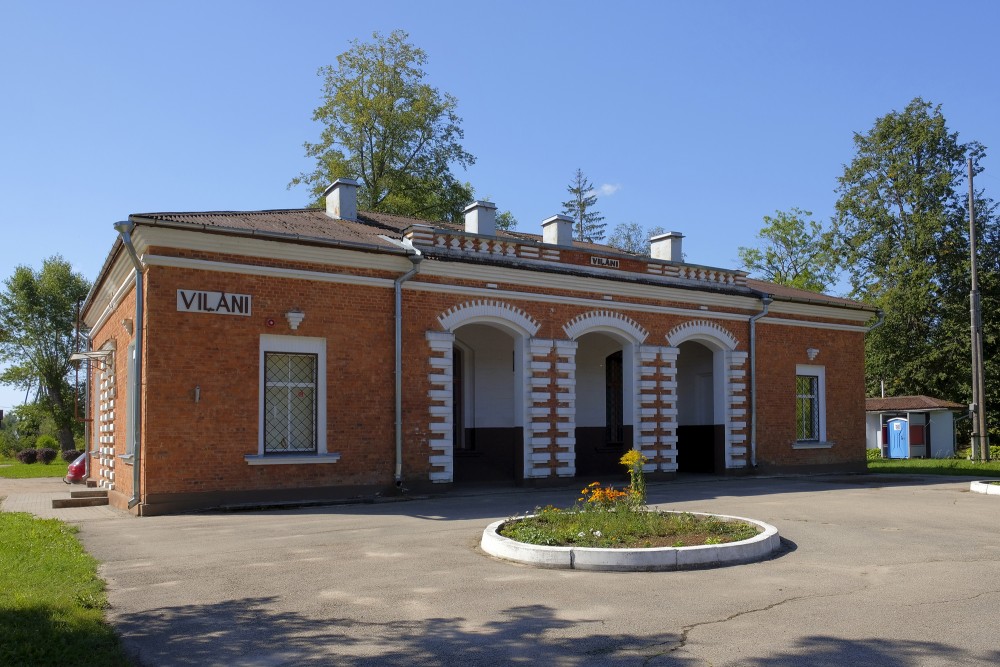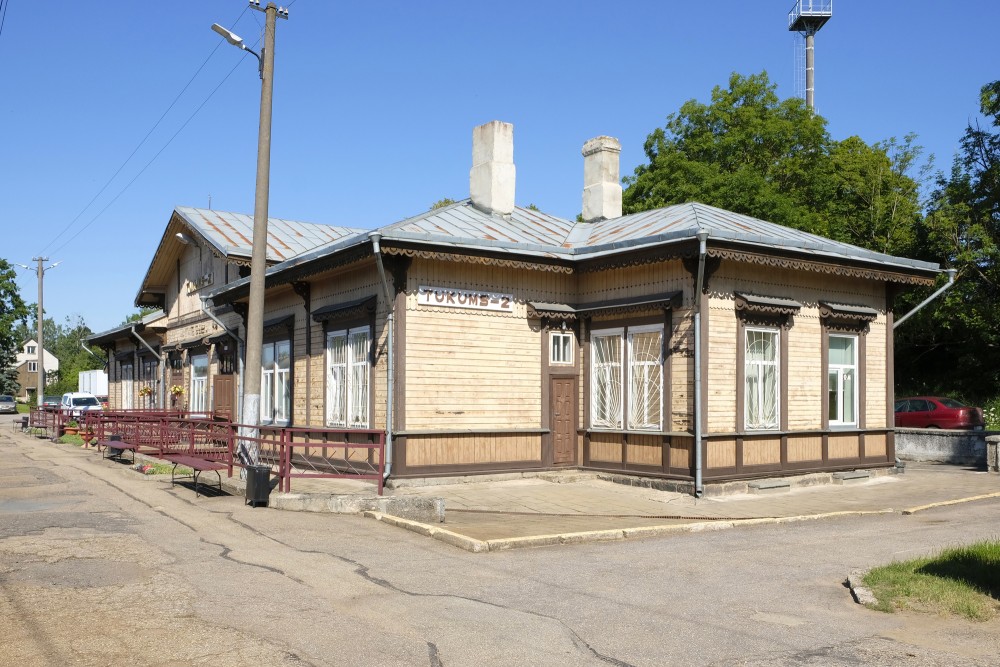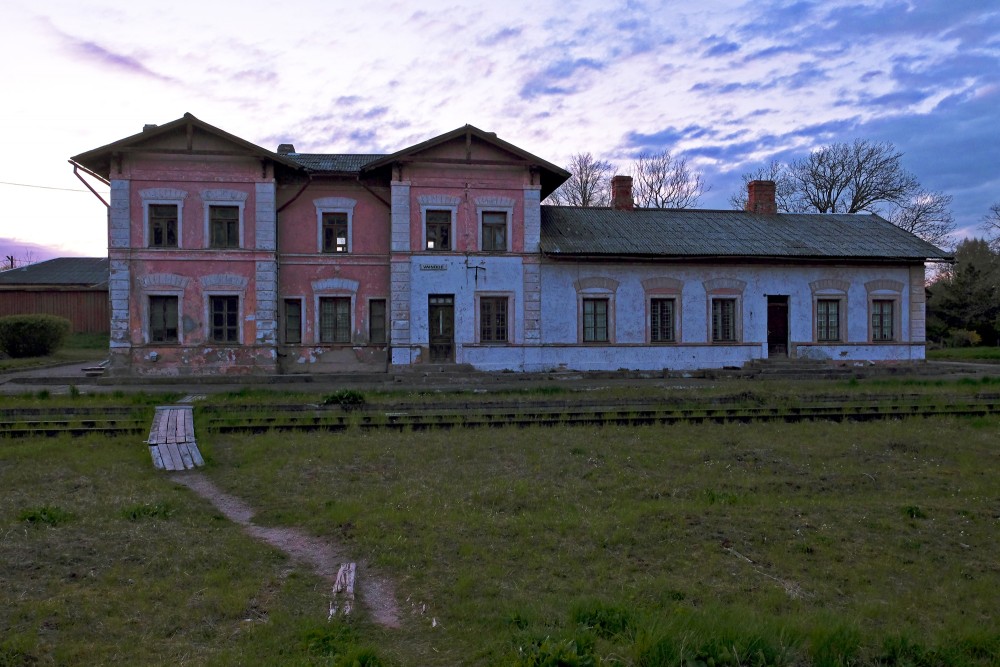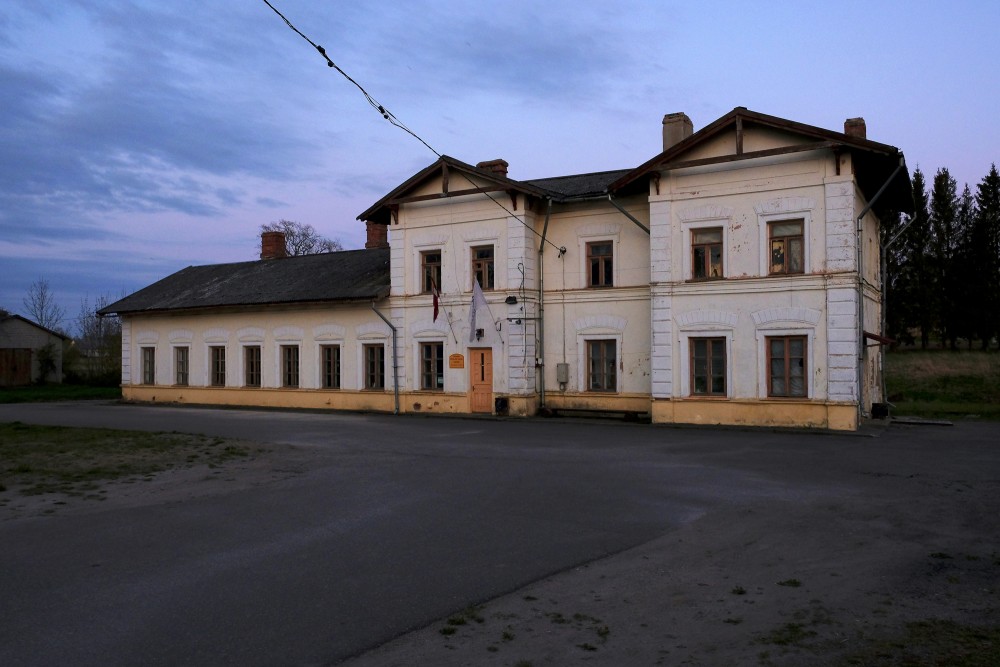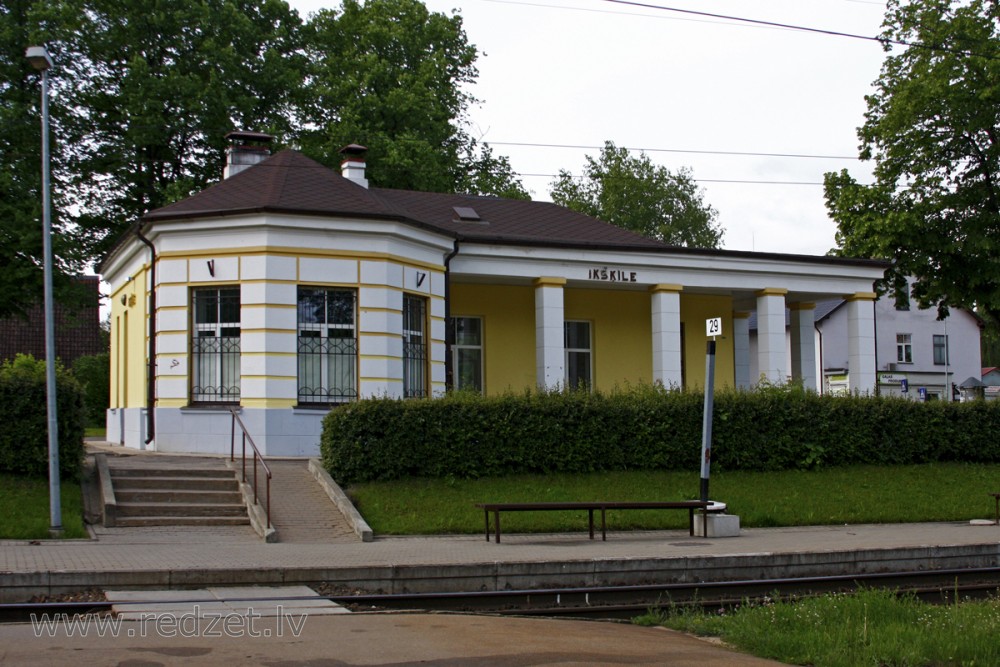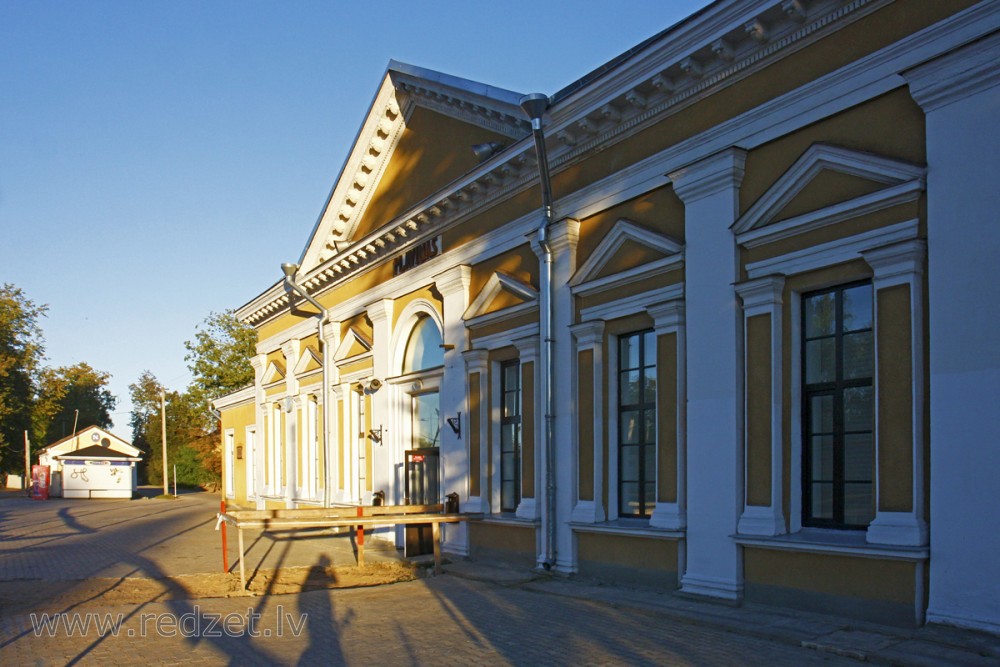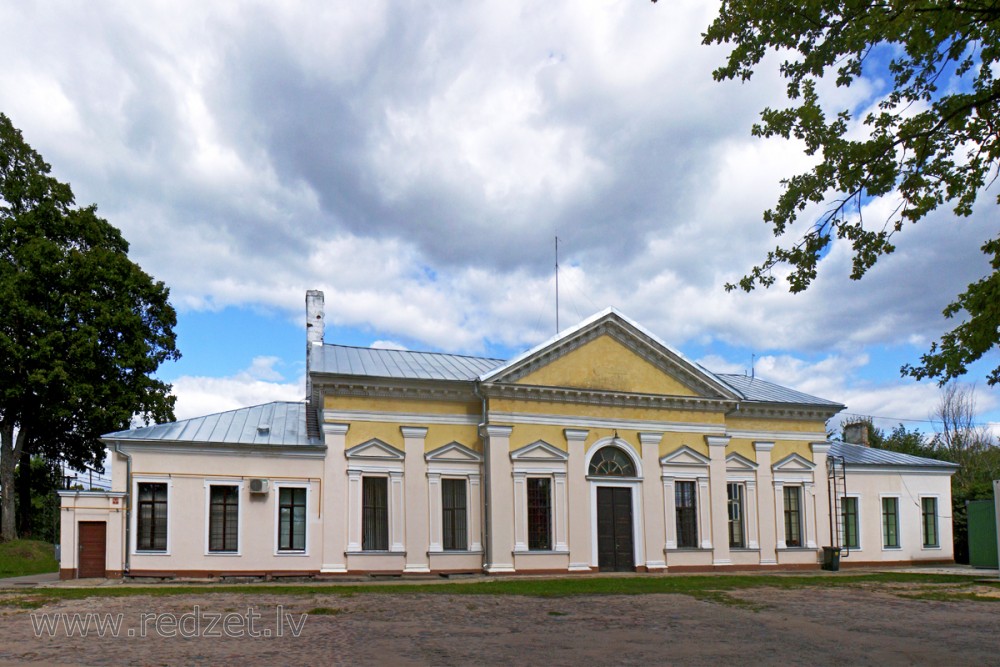Train station
A train station, railway station, railroad station, or depot (see below) is a railway facility or area where trains regularly stop to load or unload passengers or freight. It generally consists of at least one track-side platform and a station building (depot) providing such ancillary services as ticket sales and waiting rooms. If a station is on a single-track line, it often has a passing loop to facilitate traffic movements. The smallest stations are most often referred to as "stops" or, in some parts of the world, as "halts" (flag stops).
Stations may be at ground level, underground, or elevated. Connections may be available to intersecting rail lines or other transport modes such as buses, trams or other rapid transit systems.
Station facilities
Stations usually have staffed ticket sales offices, automated ticket machines, or both, although on some lines tickets are sold on board the trains. Many stations include a shop or convenience store. Larger stations usually have fast-food or restaurant facilities. In some countries, stations may also have a bar or pub. Other station facilities may include: toilets, left-luggage, lost-and-found, departures and arrivals boards, luggage carts, waiting rooms, taxi ranks, bus bays and even car parks. Larger or manned stations tend to have a greater range of facilities including also a station security office. These are usually open for travellers when there is sufficient traffic over a long enough period of time to warrant the cost. In large cities this may mean facilities available around the clock. A basic station might only have platforms, though it may still be distinguished from a halt, a stopping or halting place that may not even have platforms.
Many stations, either larger or smaller, offer interchange with local transportation; this can vary from a simple bus stop across the street to underground rapid-transit urban rail stations.
In many African, South American countries, and Asian countries, stations are also used as a place for public markets and other informal businesses. This is especially true on tourist routes or stations near tourist destinations.
As well as providing services for passengers and loading facilities for goods, stations can sometimes have locomotive and rolling stock depots (usually with facilities for storing and refuelling rolling stock and carrying out minor repair jobs).
Station configurations
In addition to the basic configuration of a station, various features set certain types of station apart. The first is the level of the tracks. Stations are often sited where a road crosses the railway: unless the crossing is a level crossing, the road and railway will be at different levels. The platforms will often be raised or lowered relative to the station entrance: the station buildings may be on either level, or both. The other arrangement, where the station entrance and platforms are on the same level, is also common, but is perhaps rarer in urban areas, except when the station is a terminus. Elevated stations are more common, not including metro stations. Stations located at level crossings can be problematic if the train blocks the roadway while it stops, causing road traffic to wait for an extended period of time.
Occasionally, a station serves two or more railway lines at differing levels. This may be due to the station's position at a point where two lines cross (example: Berlin Hauptbahnhof), or may be to provide separate station capacity for two types of service, such as intercity and suburban (examples: Paris-Gare de Lyon and Philadelphia's 30th Street Station), or for two different destinations.
Stations may also be classified according to the layout of the platforms. Apart from single-track lines, the most basic arrangement is a pair of tracks for the two directions; there is then a basic choice of an island platform between, or two separate platforms outside, the tracks. With more tracks, the possibilities expand.
Some stations have unusual platform layouts due to space constraints of the station location, or the alignment of the tracks. Examples include staggered platforms, such as at Tutbury and Hatton railway station on the Crewe–Derby line, and curved platforms, such as Cheadle Hulme railway station on the Macclesfield to Manchester Line. Triangular stations also exist where two lines form a three-way junction and platforms are built on all three sides, for example Shipley and Earlestown stations.
Tracks
In a station, there are different types of tracks to serve different purposes. A station may also have a passing loop with a loop line that comes off the straight main line and merge back to the main line on the other end by railroad switches to allow trains to pass.
A track with a spot at the station to board and disembark trains is called station track or house track regardless of whether it is a main line or loop line. If such track is served by a platform, the track may be called platform track. A loop line without a platform which is used to allow a train to clear the main line at the station only, it is called passing track. A track at the station without a platform which is used for trains to pass the station without stopping is called through track.
There may be other sidings at the station which are lower speed tracks for other purposes. A maintenance track or a maintenance siding, usually connected to a passing track, is used for parking maintenance equipment, trains not in service, autoracks or sleepers. A refuge track is a dead-end siding that is connected to a station track as a temporary storage of a disabled train.
en.wikipedia.org

